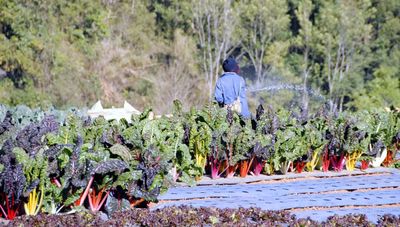Can Swiss Chard Grow in Winter?
Swiss chard not only grows well in the hot temperatures of summer, but it also tolerates frost. In fact, chard may actually taste better when it’s grown in cold weather. However, plants will be killed by temperatures below 15 degrees F. (-9 C.). That being said, there are two ways to include Swiss chard in winter gardens: First, you can plant cold-hardy Swiss chard in spring and again in late summer. The greens will be ready for harvesting about 55 days after planting seeds. Harvest older leaves first to allow smaller leaves to keep growing, and harvest frequently to encourage faster growth of the inner leaves. You can then enjoy a continuous harvest from 55 days after your first planting until several weeks after your region’s first frost date in the fall. Second, you can take advantage of Swiss chard’s biennial life cycle to get two years’ worth of harvests from one planting. A biennial is a plant that grows for two years before producing seed. If you live in a region where temperatures never drop below 15 degrees F. (-9 C.), overwintering Swiss chard is possible. Plant chard in the first spring and harvest leaves throughout the summer, then keep the chard plants in the garden all winter long. They will begin growing again the following spring, and you can enjoy early spring greens and a second summer’s worth of leaves. To maximize your chances of success, cut leaves at least 3 inches (8 cm.) above the ground during the first summer to ensure the plant can grow back. For spring planting, sow chard two to four weeks after the last frost: chard plants are frost tolerant only once they’re established. Chard “seeds,” like beet seeds, are actually small clusters containing several seeds. Plant seed clusters one to two inches (2.5-5 cm.) apart in 15 inch (38 cm.) rows, and thin to 6 to 12 inches (15-31 cm.) apart. Provide compost or a balanced fertilizer in mid to late summer.
